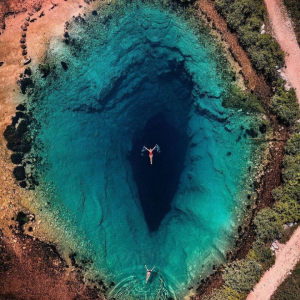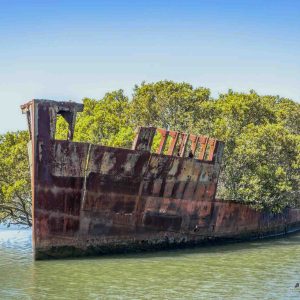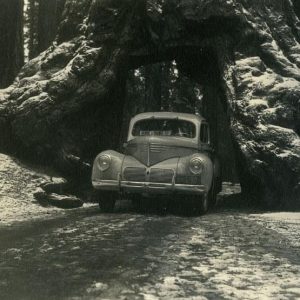
Explore the majesty of nature through 10 little-known wonders of the world.
 Unique attractions that few people know. Photo: Freepik.
Unique attractions that few people know. Photo: Freepik.
Besides famous wonders such as the Great Wall of China or India’s Taj Mahal, the following places are also impressive and unique but little known.
<strong>1. Black sand sea in Iceland</strong>
The black sand beaches in Iceland are like surreal scenes from a fantasy movie. They are known for their exceptionally dark sand. This type of sand originates from the volcano in the area.
 Black sand sea in Iceland. Photo: Tripadvisor.
Black sand sea in Iceland. Photo: Tripadvisor.
When molten lava comes into contact with water, cools and solidifies, breaking into small pieces. Over time, these fragments erode and break into smaller pieces, eventually forming black sand.
<strong>2. Lake Natron</strong>
Lake Natron is a unique saltwater lake located in northern Tanzania, near the Kenyan border. The lake is one of the great but little-known natural wonders and has a special red color.
This red color is formed by the high content of minerals and salts, especially sodium carbonate and other alkaline salts. These salts are introduced into the lake by hot springs and mineral-rich groundwater from the surrounding volcanic areas.
Lake Natron in northern Tanzania. Photo: Tanzania Horizon.
The lake’s high alkalinity and salinity create a harsh environment for most living organisms. However, Lake Natron is home to a species of halophilic microorganisms and algae, including cyanobacteria. These organisms thrive in harsh conditions and give the lake water a vibrant red or pink color.
<strong>3. Antelope Canyon</strong>
This canyon is located in the southwestern United States, on the Navajo Nation reservation near Page, Arizona. What makes this canyon so remarkable are the exquisite geological formations and beautiful colors.
The canyon has narrow, winding paths that have been eroded by wind and water over time. The walls here are smooth and curved, with beautiful patterns carved into the stone.
 Antelope Canyon in the southwestern United States. Photo: Visit Arizona.
Antelope Canyon in the southwestern United States. Photo: Visit Arizona.
Visitors need to book guided tours to explore the canyon, then can go deeper inside and enjoy the unique display of colors, from vibrant reds and oranges to deep blues and purples jar. The contrast between light and shadow accentuates the smooth, curved shape of the canyon walls.
<strong>4. Na Pali Coast</strong>
Na Pali is one of the most photographed locations in Hawaii. Lush green jagged cliffs rise around sparkling turquoise water, creating an unforgettable scene.
 Na Pali Coast in Hawaii. Photo: Go Hawaii.
Na Pali Coast in Hawaii. Photo: Go Hawaii.
Most visitors will find the scene quite familiar as it appears in many famous movies, such as Jurassic Park. While it’s possible to explore by sea, visitors should book an air tour to see the full splendor of the Na Pali coast.
<strong>5. Belize Blue Hole</strong>
The Belize Blue Hole is a famous natural wonder located off the coast of Belize in Central America. One of the largest and deepest underwater sinkholes in the world, this hole is more than 300 m in diameter and more than 120 m deep.

Seen from the air, it forms a circle surrounded by turquoise water, creating a mesmerizing contrast. This dark blue color is created by the depth and clarity of the water. The blue hole was formed more than 10,000 years ago, after a series of events during the ice age when sea levels were much lower than today.
<strong>6. Yellowstone National Park</strong>
Established in 1872, Yellowstone is the oldest national park not only in the US but also in the world. In its early years, stories of its brilliance were met with skepticism because its geothermal activity was considered unusual.

Common geothermal activities here are geysers, hot springs, mud pots and steam vents. The park is home to the famous Old Faithful geyser, which shoots water more than 50 meters into the air and on a regular schedule.
<strong>7. Ha Long Bay</strong>
Ha Long Bay is one of the most visited spots in Vietnam. Named on the UNESCO world heritage list, Ha Long Bay is a natural wonder not to be missed.
 Ha Long Bay in Vietnam. Photo: Viettravelland.
Ha Long Bay in Vietnam. Photo: Viettravelland.
The bay has more than 1,600 limestone islands and islets, creating impressive, awe-inspiring seascapes. Ha Long Bay’s emerald waters are ideal for boat cruises. The appropriate time to visit the bay is from October to April because the weather is quite cool during this period.
<strong>8. Pamukkale</strong>
Pamukkale in Turkish means “Cotton Castle”, was named the 8th natural wonder of the world and was recognized by UNESCO as a World Natural Heritage Site in 1988. Pamukkale is located in the city Denizli, southwest of Turkey, about 650 km from Istanbul.

From a distance, Pamukkale is as white as a snowy mountain. Over eons, natural sediment layers caused by water from hot springs rich in calcium carbonate flowed through the rock ledges, creating a chain of pure white limestone stacked on top of each other like stairs.
Visitors to Pamukkale have the opportunity to walk barefoot on the steps, enjoying the feeling of warm, mineral-rich water flowing around their feet. The terraced fields are not only visually stunning but are also known for their healing powers.
<strong>9. Iguazu Falls</strong>
Iguazu Falls is a majestic natural wonder located on the border between Argentina and Brazil. Made up of more than 275 waterfalls, Iguazu is the largest waterfall system in the world. The place is surrounded by lush tropical forests and the sound of falling water echoes like thunder.
 Iguazu Falls is located on the border between Argentina and Brazil. Photo: CNN.
Iguazu Falls is located on the border between Argentina and Brazil. Photo: CNN.
One of the best attractions at Iguazu Falls is Devil’s Throat, a U-shaped waterfall over 80 meters high. It is formed by a large semicircular cliff jutting out from the surrounding landscape, water spilling over the edge and plunging into the abyss below.
<strong>10. Salar De Uyuni</strong>
Salar de Uyuni, also known as the Uyuni salt flats, is a unique natural wonder located in southwestern Bolivia. This is the largest salt flat in the world, with an area of more than 10,000 km2 and an altitude of about 3,650 m above sea level.

Uyuni salt flat is a vast stretch of land, creating a surreal and strange landscape. Salt flats were formed by the evaporation of prehistoric lakes, leaving behind a thick layer of salt and minerals.
The texture of the salt flats changes as visitors move across them, some areas are smooth and flat while others are cracked and rough, giving visitors the feeling of being in another world. The scenery will be more beautiful during the rainy season, the water in the salt flat reflects the sky and creates a surreal scene.





